
18 minute read
Stephanie Hodgkins
from Atelier No_10
by Union Print
Beyond the Catwalk
INTERVIEW WITH STEPHANIE HODGKINS
Advertisement
Stunning, classy, elegant and incredibly beautiful with a dazzling smile that strikes you instantly. A mother of two with a third on the way, a model, an actress and an entrepreneur, Stephanie Hodgkins is one of the most famous faces in the local modelling industry. Stephanie shared with Atelier her definition of beauty, her views on the fashion industry and the importance of family in her life.
How would you define beauty?
I find that beauty is something one can also feel, so apart from being visually pleased with the way a person looks, beauty is transpired through a person's aura. Simply being nice to look at does not make a person beautiful, it’s their mannerism and personality. If you know a beautiful looking person who is arrogant it immediately makes them represent the opposite of beauty.
It is said that imperfection is beauty. To what extent do you agree?
I do agree, having unique features and imperfections can make a person more attractive, interesting and more memorable. Imperfections also feel real and relatable to many, nobody is perfect even the ones considered most beautiful.
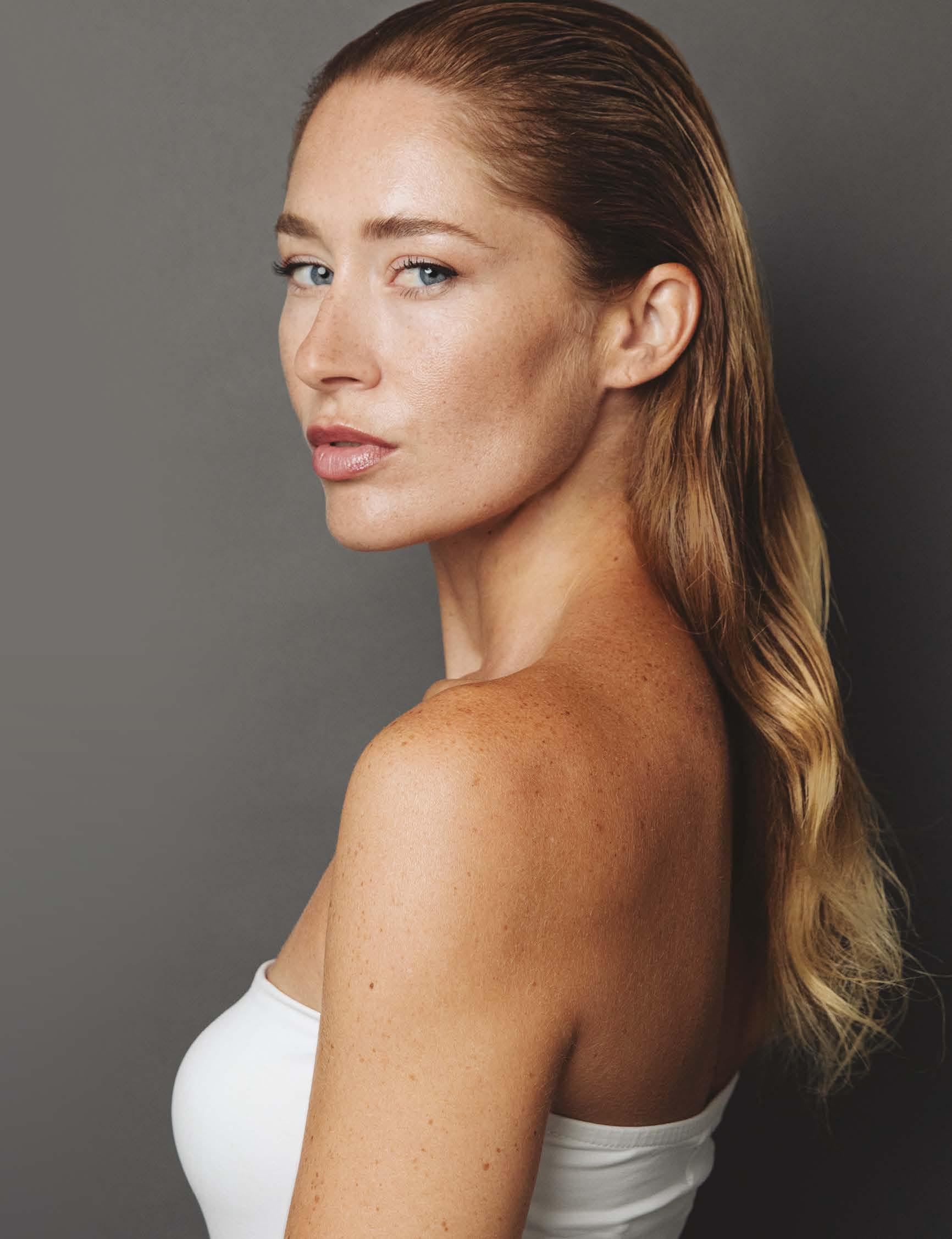

Photo by Kurt Paris
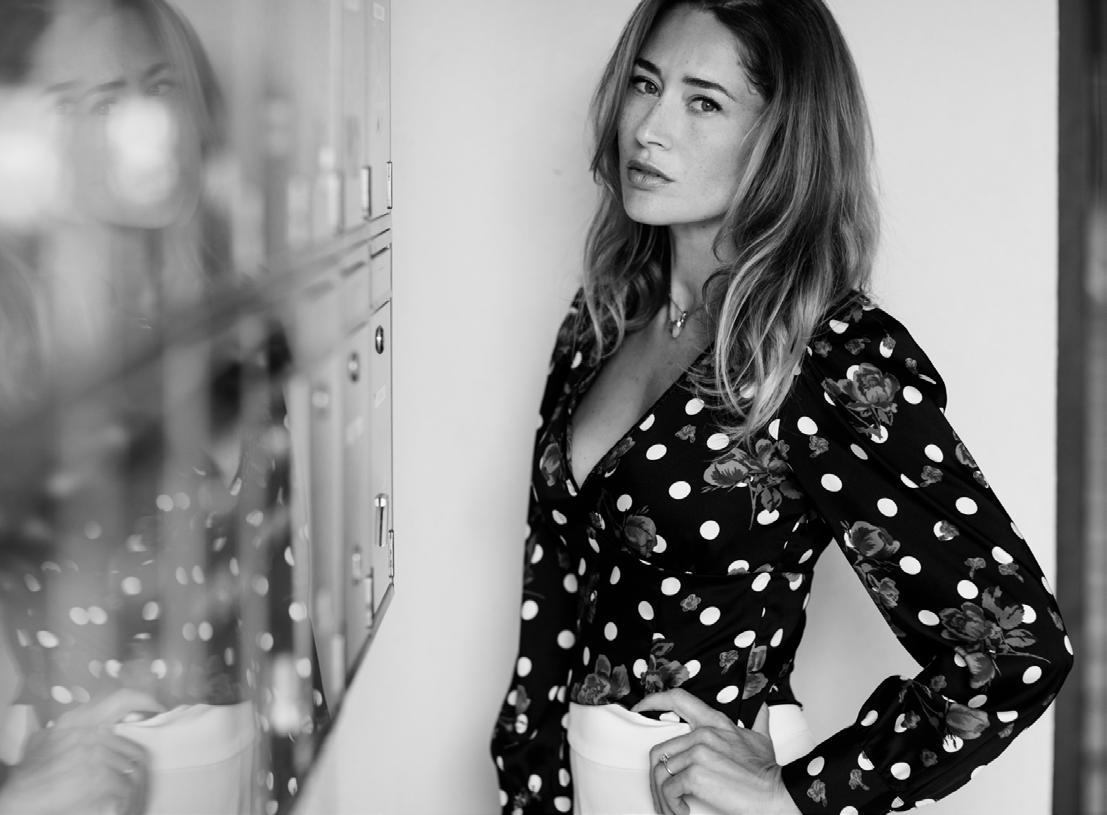
In a recent interview, you described yourself as a very, very ambitious person. To what extent is ambition a key ingredient for success?
Ambition is key to success. I have always strived to succeed in every aspect of my life and have been kept very busy being a mother of two, a model and also a makeup artist and aesthetician. I feel a constant pull to do more and be better in everything I do in life. I feel I want to achieve more and more. It’s an essential ingredient to success as without it motivation to act and be proactive in daily life would be impossible.
What is your personal style?
My style tends to change with my mood, however I always say it 'feels good to look good' so making an effort to dress up a little always helps. My day to day style is preppy yet chic and I do love to dress up for occasions, even themed ones!
Anna Wintour once noted, “Create your own style… let it be unique for yourself and yet identifiable for others.” Do you agree?
Wise words from a style icon for many. People do tend to create their own unique style...even by just adding small details and accessories to an outfit. I love to do this. It would be so boring if everyone just wore the same style!
What do you think about the state of fashion today?
These days fashion has no limits and nothing much surprises me, it's great that people are freely allowed to express themselves through their style and outfits. The past was so restricted. So having that freedom to dress as one pleases without being judged to a certain extent is liberating.
What does it take to succeed in such a cutthroat industry?
Confidence and persistence is key, just remember that whatever you want to achieve you need to keep moving forward and not let anything or anyone get in your way. It is a tough and competitive industry but it is certainly vast and opportunities are all around. You just have to be ready.
Photo by Kurt Paris for Mon Eclat
Do you think it’s fair to say that social media plays a key role in a model’s job today?
These days social media is a portal to fast success, it’s so easy to get in contact with the rest of the world and model scouts are always on the prowl however there are lots of frauds out there so be cautious. In recent years I have made many new contacts and had more opportunities arise as a model thanks to social media.

What role does family play in your life?
My family is everything to me, they are my lifeline and motivation. I love being a mother. It's such a fulfilling experience. There never is a dull moment that’s for sure, it can be challenging but worth every second. We are actually expecting our third child this May which is very exciting especially for my little ones. I am very lucky to have had the opportunity to work on adverts with my husband, Adrian and our children, Erik and Kate, which is wonderful as we get to spend even more time together and can imagine looking back at them in the future. My parents and husband have always supported me and encouraged me.
What advice would you give to someone who is just starting out in modeling today?
I highly recommend starting with a good renowned agency. I was scouted by Carina Camilleri at Models M when I was just 14 years old! Never too early to start. Be confident and make as many contacts as you can. Modeling is all about networking and communication, one job usually leads to another. Stay humble and never do anything that makes you feel uncomfortable.
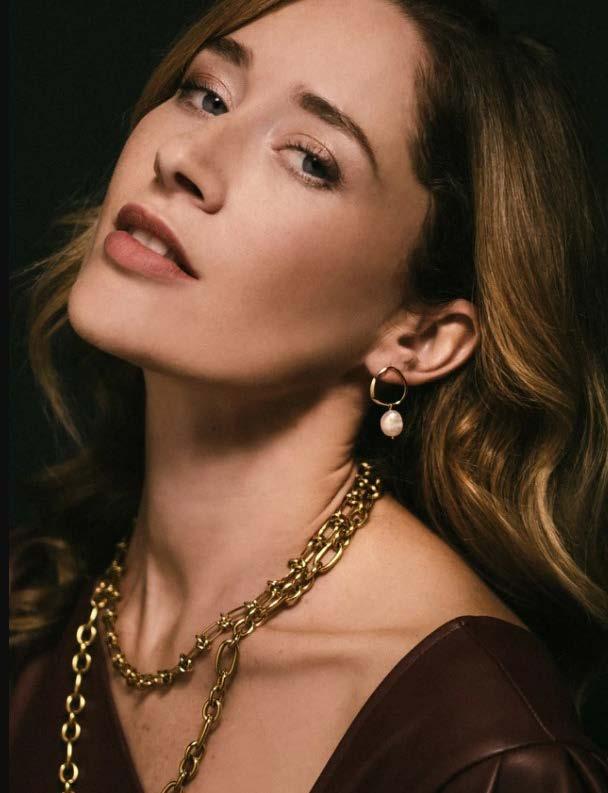
A far-sighted vision beyond a jam-packed year
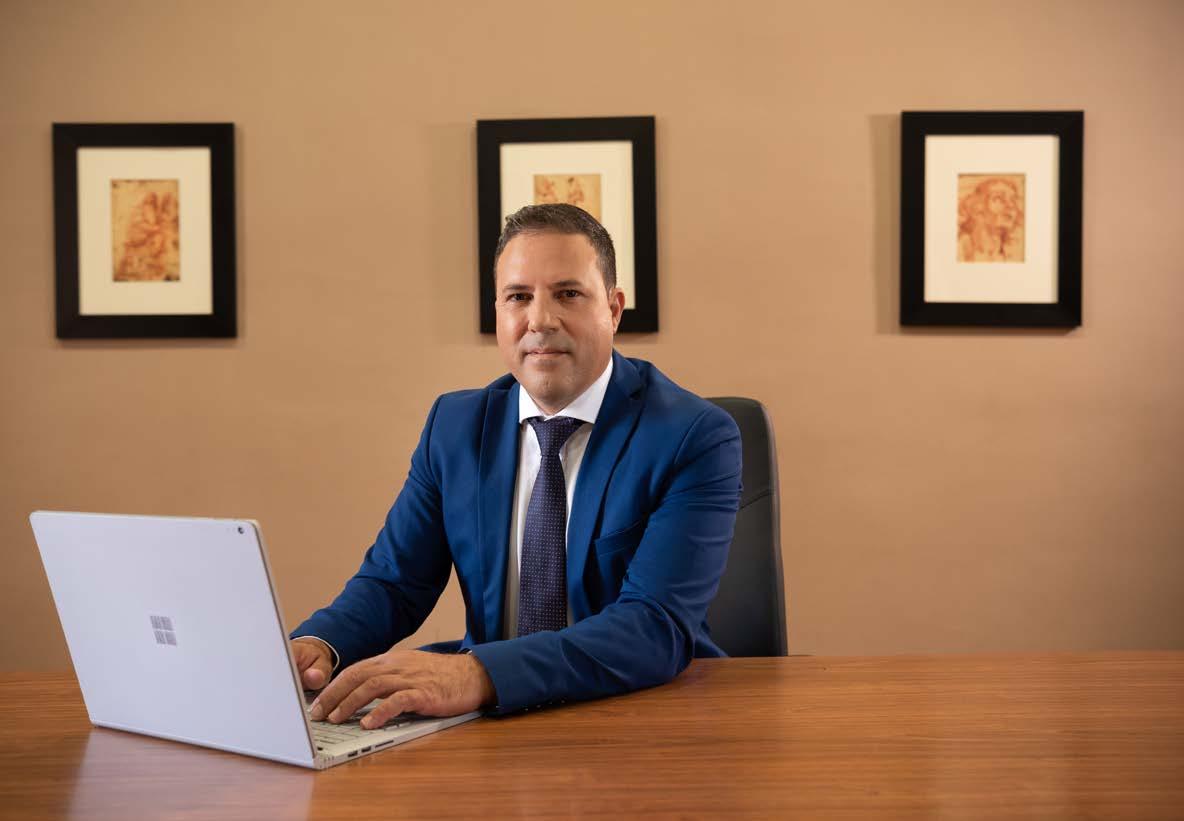
2020 may well have been a nightmarish year on various levels for cultural heritage agencies worldwide, but NOEL ZAMMIT, hands firmly at the helm of Heritage Malta, has braved the storm and ridden the waves and is now looking forward to steering his flagship onto calmer waters, safe in the knowledge that he and his team have garnered valuable lessons from the current pandemic and have set sail through a jam-packed 2021.
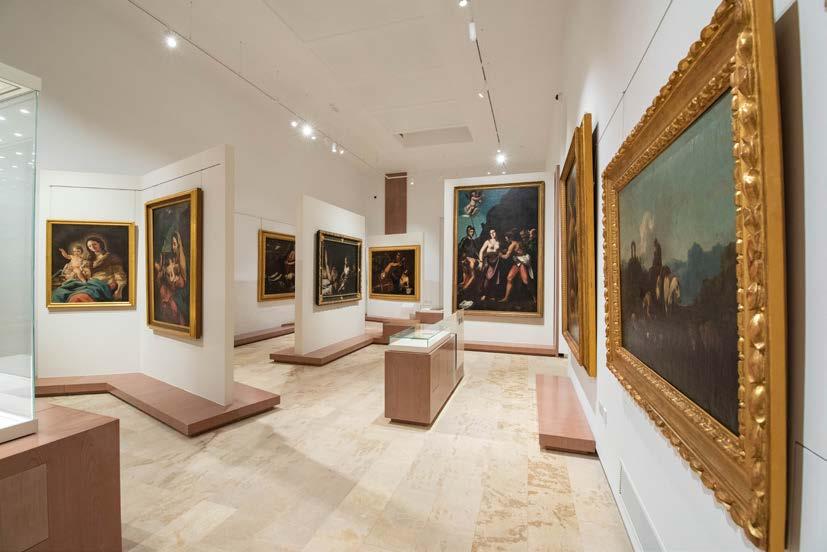
Resources Department, Marketing and Communications, as well as Technology and Digitisation.
“I strongly believe that the renovation of our internal structure should be constantly ongoing. If you stop reinventing yourself, it means that you are tired. Our job is to keep challenging the status quo in order to always remain at the forefront of our market,” Noel reiterates.
In line with internal restructuring, a change in culture and mindset was also in order. This was accomplished through several initiatives whereby employees were
“When I took over as Heritage Malta’s Chief Executive Officer in October 2017, I had the advantage of having previously occupied managerial roles in Corporate Services and IT, and so I was already exposed to several fields of operation within the agency and to any shortcomings therein,” Noel recalls. “The first task I set myself was to visit every site and museum under Heritage Malta’s wing, every office and workshop, to meet all our employees and discuss any shortcomings I wasn’t aware of.”
One main mission was to assess all ongoing projects at sites and museum and address any flaws and weak points. MUŻA, for example, was running the risk of not meeting its inauguration deadline and so posed quite a challenge. “A challenge which we overcame – albeit not in the best way possible – and which served as an eye-opener in many aspects, including how to deal with contractors and legal issues,” says Noel.
There was also the challenge – still omnipresent – of the agency’s restructuring. Heritage Malta had retained the same structure since 2008 and remained unchanged while its competitive forces went through complete transformations. An internal restructuring exercise was therefore implemented, with particular focus on the Human encouraged to voice their opinions. “I believe it’s important to empower someone with a project, thus motivating them to engage and not just follow orders.”
Throughout this entire metamorphosis, the client was placed at the very centre of all operations. “We have made it our mission not only to safeguard the cultural heritage entrusted in our care, but also to provide our visitors with an enhanced experience,” Heritage Malta’s CEO says passionately.
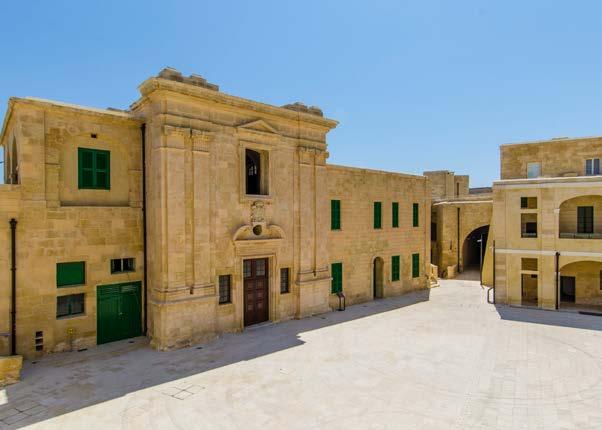

By way of explanation, he highlights the new mentality that a site or museum is not a static location but a cultural resource that the community at large may use. “We have broadened the sites’ use in such a way as to go way beyond the artefacts. You don’t visit a museum just to admire exhibits and learn about them, but also to relax in the cafeteria, use the internet, do some work in peace and quiet. However, even if you were to restrict your visit to the museum space only, you would still enjoy a more holistic experience through our use of the latest technology and improved design and interpretation panels.”
Another case in point is the allotment agreements that Heritage Malta has entered into with various individuals regarding the community garden at the Abbatija tad-Dejr. This project has proved to be a huge success and the garden is a true example of how individuals can be safely involved into community-centred projects through which both parties stand to benefit.
But back to Heritage Malta’s core business, namely making history and culture accessible to the public. In the past few years, the agency has strived relentlessly in this respect, visiting museums and historical sites abroad to grasp the latest market trends and recruiting foreign museum designers to benefit from their experience when carrying out projects such as Fort St Angelo, Fort St Elmo, MUŻA and the Grand Master’s Palace.
The COVID-19 pandemic was a direct challenge to Heritage Malta’s mission of accessibility, forcing the agency first to close its doors entirely to the public and later to restrict admissions and opening hours. However, the agency was proactive and foresighted enough to rise to the occasion and adapt to the new circumstances. “We found
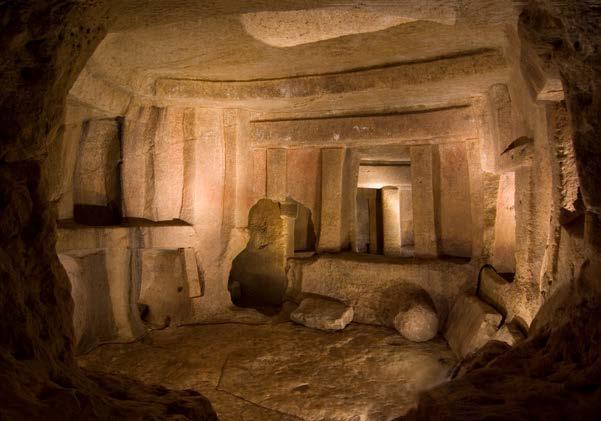
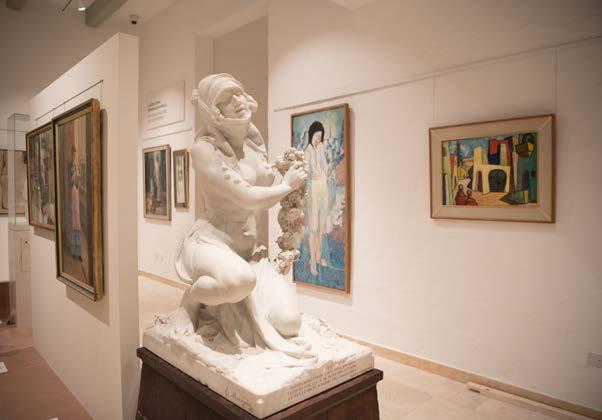
ourselves in a situation where cultural heritage had to visit the public, and not the other way round. We were able to achieve this thanks to our hefty investment in technology and digitisation, which enabled us to make our heritage accessible to the public virtually. In this way, we facilitated alternative access to our sites – some of which aren’t even accessible physically. We also launched our online shop, making it possible for our clients to buy the products usually found at our retail outlets in sites and museums.”
Other initiatives during the pandemic were aimed at students, given that in COVID-free times some 80,000 youngsters used to visit Heritage Malta’s sites and museums annually. During the months when schools were closed, the agency produced a series of documentaries and aired them on its social media channels, engaging students to learn from home. They were a great success, as was the competition Be the Artist, which saw more than 500 students producing their own works of art with historical and cultural themes.
So what lessons has he learnt from the COVID experience, both as Heritage Malta CEO and on a personal level? “First and foremost, to never take anything for granted. Secondly, to always keep in mind how important our clients are to us, and to constantly focus on retaining their central position in our rationale and in everything we do. Thirdly, we have learnt to be more resilient and more open to new ideas so that we are well-prepared for future hurdles.”
In spite of the past year’s setbacks – or possibly because of them – optimism and determination reign supreme within the national cultural heritage agency. Its CEO is adamant: “2021 is a jam-packed year during which we are continuing to fulfil our mission even if some events are currently on hold. We have some unique exhibitions coming up locally, while strengthening our presence in the international scene with other exhibitions abroad. Bearing in mind that cultural heritage is one of the main pillars of our economy, we also aim to become more sustainable while attracting further investment by the government.”
In the meantime, works continue on several major projects. To name but a few, there is the ongoing restoration of the Grand Master’s Palace which, at an expense of €28 million, part-financed by the EU, is the vastest project ever embarked on by Heritage Malta; the ambitious Maritime Museum project which, when completed, will offer visitors a completely new, multisensory experience; the Villa Guardamangia project, which promises various exciting opportunities, particulary in the British tourist market; the extensive restoration currently underway at the Main Guard in Valletta; further works at Għar Dalam and the Inquisitor’s Palace; improved accessibility at the Ħal Saflieni Hypogeum; and, of course, the continuation of the digitisation programme, aided by further investment in state-of-the-art technology.
In the end, no effort and no cost is too great if it goes towards a cultural heritage that is unique to the world and that Heritage Malta is committed to conserving by living up to its motto of ensuring a future for our past.
Noel Zammit was interviewed by Daniela Attard Bezzina, Communications Executive – Heritage Malta
For more information about Heritage Malta's sites visit heritagemalta.org
Triple anniversary for
The Domvs Romana in Rabat

By Warren Bugeja, Communications Executive, Heritage Malta
Stepping into the fauces, it is cool and dark after the harsh sunlight outside. The client blinks and adjusts his eyes, and guided by the flickering candles of the candelabra makes his way to the atrium. He is not alone. Together with other clients, he will await his patron, the Dominus (master) of this household, to make his appearance in the tablinium (office), where the daily ‘salutatio’ or blessing will be exchanged. Beyond the tablinium, just to the right, the client can just make out dappled shadows playing on the peristyle’s Doric columns, cast by the opening to the sky above.

Unless he has the good fortune to secure a dinner invitation, this client will never cross that invisible threshold marking the public and private spheres of this Roman townhouse.
Beautiful are the drinking doves whose head casts a reflection on the water of the cantharus (fountain)
So wrote Pliny the Elder, in his Historia Naturalis, praising the artist Sosos from Pergamon (modern-day Anatolia) for his artistic skills. Replicated throughout antiquity, Sosos’ dove motif, on the central emblemata in the peristyle’s sunken mosaic impluvium at the heart of the Roman Domvs, continues to welcome the visitor several centuries later and signal that they have been accepted into the inner domestic sanctuary.
The peristyle’s functions were many. Besides being a source of water collection, it allowed light into the house and doubled up as an art gallery. The various layers of wall paintings illustrate that craftsmen were updating and keeping up with styles and fashions in Rome.
Unlike similar Roman abodes of the period, “the layout of the Dvmus Romana (Roman Town House) is atypical since it does not follow a straight line of sight from the fauces to the peristyle, which leads us to believe that the peristyle might have been a later addition,” comments David Cardona, Senior Curator for Phoenician, Roman and Medieval sites at Heritage Malta. anniversary of the site’s accidental discovery when workers planting trees for Howard Garden came across some of the mosaics and Islamic burials in 1881. The milestone is sandwiched between two other anniversaries. One in 2020 marking the 100th anniversary of the commencement of excavations overseen by Sir Themistocles Zammit, at the rear and front of the current site entrance with its 1920 portico. And another to be celebrated next year, commemorating the construction of the museum building itself 140 years ago. Originally built to protect the mosaics and serve as a repository for all the Roman antiquities of the Island, the Domvs was the first museum erected on Malta.
Antonio Annetto Caruana, the librarian of the Bibliotheca and curator of the archaeological collection housed in it, was immediately entrusted with clearing the peristyle and nearby mosaics from under a metre and a half or more of soil when the site was first discovered.
Several activities were planned to mark this triple anniversary, but unfortunately, COVID-19 put a spanner in the works. However, the limited museum opening times have enabled an overhaul in the way visitors experience the Roman townhouse. A series of new interpretation panels and

Emperor Claudius Oscilla with griffen

Built between 50BC and 50AD, the Dvmus is the only urban dwelling of its kind on the Maltese Islands. The other Roman domestic buildings, such as the rural farmsteads of San Pawl Milqi and Ta’ Kaċċatura or the Villa Marittima at Ramla Bay, do not exhibit the same richness of interior decoration and level of sophistication in architecture.
This February, the Domvs Romana is celebrating the 140th
screen displays will help shed further light on domestic aspects of everyday life in a Roman household, including ancient food and drink, makeup and hairstyles, clothing, and entertainment. One of the panels will feature a recorded interview of Lina Cardona, who, along with her sister and parents, found refuge in the domvs as a child during the Second World War. Lina, who is still alive, recounts how they were evacuated here from Ħal Tarxien when her father, a custodian of St. Paul’s
We can deduce that whoever lived in this Domvs, if not the Protos or Governor of the Island himself was well connected, besides being wealthy. He must have wielded some power. The procurement of marble was under the control of the Emperor and you would also have required his dispensation or that of his officials to display a statue of the Emperor and his family.”
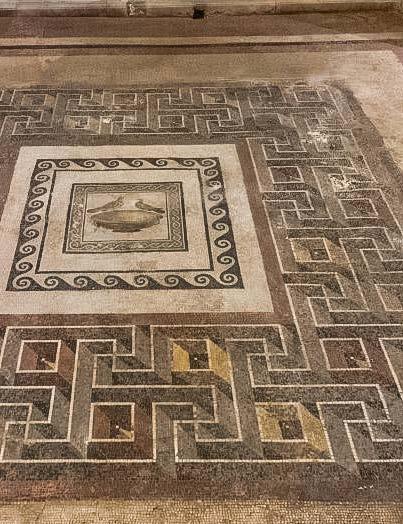
DAVID CARDONA
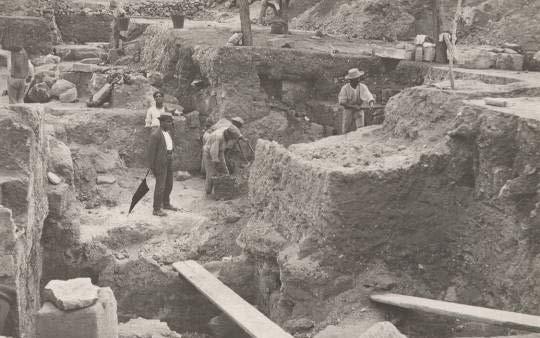
Excavations of 1881
Catacombs, asked permission from the then Director of Museums to take his family up to Rabat for safety. Keeping faith with tradition, Lina’s grandson also works as a Gallery Site Officer with Heritage Malta. Lina recalls conservators working on the titular altar painting of Ta’ Liesse Church when the ‘Roman Villa Museum’ was converted into an emergency restoration centre for paintings damaged by the bombing.
The anniversary upgrade of the Domvs also includes a project to replace the present peristyle skylight with a retractable modern replica of the 1880s version and install climate control units. Furthermore, visitors will be able to scroll through a tablet featuring a website that catalogues Roman Statuary in Malta, created by Profs. Anthony Bonanno in collaboration with Heritage Malta. The tablet will be positioned next to larger than life statues of the Emperor Claudius, his daughter Claudia Antonia and a statue of a child, identified by the bulla containing a protective amulet in the folds of his toga, most likely the Emperor’s adoptive son Nero.
According to David Cardona, “we can deduce that whoever lived in this Domvs, if not the Protos or Governor of the Island himself was well connected, besides being wealthy. He must have wielded some power. The procurement of marble was under the control of the Emperor and you would also have required his dispensation or that of his officials to display a statue of the Emperor and his family.” Once colonized in 218 BC, and the Punic wars concluded, the Maltese Islands may not have been as strategically important to the Romans as previously thought, but the fact that a personage of Cicero’s stature requested to be exiled here meant that it was not a backwater either.
Originally the ancient Roman ‘capital’ of Melite stretched from the acropolis and temple precinct of present-day Mdina to St. Paul’s Parish Church in Rabat. Mdina would have contained the largest number of public buildings, as many marble relics were found there, including a dedication concerning a temple to the god Apollo near the Benedictine monastery. A monumental marble statue of the Phoenician goddess Ashtarte, nowadays exhibited within the Domvs, once stood in a niche on the left of the entrance to Mdina. Later day passers-by would irreverently spit upon the statue on account of its pagan representation.
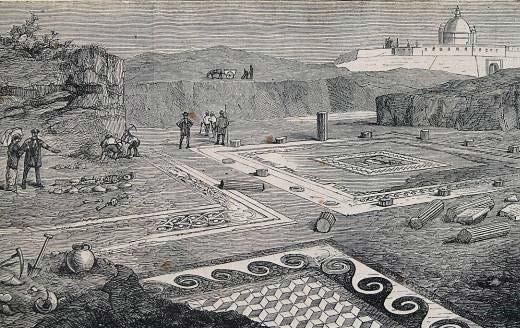
Although we may never know if the Medieval and Baroque palaces of Mdina conceal a Circus Maximus or an Amphiteatre - the 1693 earthquake alone left 5 metres of debris – four fields, some of which display possible Roman fortifications, remain to be excavated. Zammit cut two preliminary trenches in these fields, situated across the road, dug by the British in 1899, to the Museum railway station between Mdina and Mtarfa. ‘Melite Civitas Romana’ is the name given to a series of excavations which have been postponed to later this year with the aim of discovering more about the ancient town. The project, a century on from Zammit’s last dig, is a joint collaboration between Heritage Malta, The University of South Florida (USF), and a group of Australian and British self-funded volunteers who go by the name of ‘Intercontinental Archaeology.’ “The USF are specialised in the 3D and digital documentation of archeological sites and have already created a 3D model of the entire Domvs site for us. The plan is for us to build a virtual website whereby online visitors can view what is happening during the excavations on a daily basis as we upload 3D images of the artefacts we find and the trenches we excavate. Hopefully, this will generate interest and finances too.’ David Cardona elucidates.







